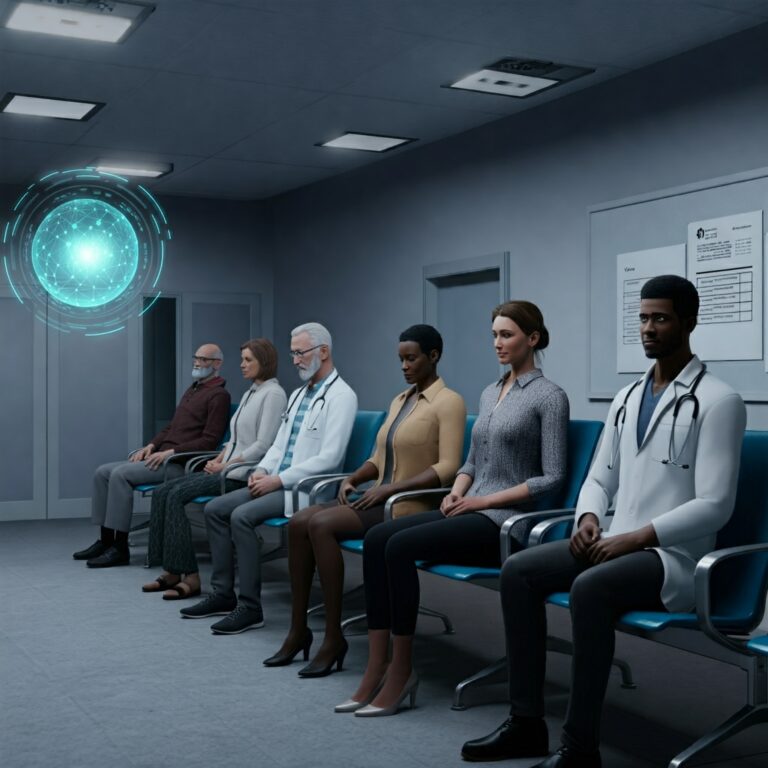The Algorithmic Doctor Will See You Now: How AI is Disrupting Telehealth
The healthcare landscape is undergoing a rapid transformation, driven by technological advancements and evolving patient expectations. At the forefront of this revolution is telehealth, which has witnessed explosive growth, particularly accelerated by the COVID-19 pandemic. Now, another disruptive force is emerging: artificial intelligence (AI). This article explores the intersection of these two powerful forces and how AI is reshaping the future of telehealth, offering both unprecedented opportunities and unique challenges for industry professionals.
Telemedicine: A Sector Overview and its Growing Influence in Healthcare
Telemedicine, broadly defined as the delivery of healthcare services remotely using telecommunications technology, encompasses a wide range of applications, including video consultations, remote patient monitoring, electronic health record (EHR) access, and medical education. Its rise has been fueled by several factors: increasing demand for accessible and affordable healthcare, a growing shortage of healthcare professionals, particularly in rural areas, and the proliferation of smartphones and high-speed internet.
Within the healthcare industry, telemedicine is carving out a significant role. It’s proving effective in managing chronic conditions, providing specialist consultations in underserved areas, facilitating post-discharge care, and enhancing patient engagement. The convenience and cost-effectiveness of telehealth services are particularly appealing to patients, leading to wider adoption and integration within traditional healthcare systems. Furthermore, telemedicine is proving crucial in addressing health disparities by bridging geographical barriers and expanding access to specialized care.
AI Integration: Transforming the Telehealth Landscape
The integration of AI into telehealth is creating a paradigm shift in how healthcare is delivered and experienced. AI algorithms can analyze vast amounts of patient data, identify patterns, and provide clinicians with valuable insights for diagnosis, treatment planning, and personalized care. This data-driven approach enhances the efficiency and accuracy of telehealth services, leading to better patient outcomes.
Here are some key ways AI is impacting telehealth:
- Enhanced Diagnostics: AI-powered image recognition tools can analyze medical images like X-rays and CT scans, assisting radiologists in identifying anomalies and speeding up diagnosis. Furthermore, natural language processing (NLP) can analyze patient conversations and medical records to detect potential health risks and provide early warnings.
- Personalized Treatment Plans: By analyzing patient data, including medical history, lifestyle factors, and genetic information, AI can help develop personalized treatment plans tailored to individual needs. This personalized approach can lead to more effective treatments and better patient adherence.
- Improved Patient Monitoring: AI-powered remote patient monitoring systems can continuously collect and analyze patient data, such as vital signs and activity levels. This real-time data allows clinicians to proactively identify potential health issues and intervene early, preventing hospital readmissions and improving overall health outcomes.
- Automated Administrative Tasks: AI can automate administrative tasks such as appointment scheduling, insurance verification, and billing, freeing up valuable time for clinicians to focus on patient care. This increased efficiency can significantly reduce healthcare costs and improve the overall patient experience.
- Virtual Assistants and Chatbots: AI-powered virtual assistants and chatbots can provide patients with 24/7 access to healthcare information, answer their questions, and guide them through the telehealth process. This improves patient engagement and reduces the burden on healthcare professionals.
Key Trends and Statistics Shaping the Future of AI-Powered Telehealth
Several key trends are shaping the future of AI-powered telehealth:
- Increased Adoption of Wearable Technology: The growing popularity of wearable devices, such as smartwatches and fitness trackers, provides a wealth of patient data that can be analyzed by AI algorithms to provide personalized health insights and recommendations.
- Focus on Data Security and Privacy: As AI relies on vast amounts of patient data, ensuring data security and privacy is paramount. Robust cybersecurity measures and adherence to data privacy regulations are crucial for building trust and ensuring patient confidentiality.
- Integration with Electronic Health Records (EHRs): Seamless integration of AI-powered telehealth platforms with EHR systems is essential for efficient data sharing and streamlined workflows.
- The Rise of Tele-ICU: AI-powered telehealth is transforming intensive care units (ICUs) by enabling remote monitoring and specialist consultations, improving patient care in critical situations.
Recent Market News and Developments:
- Several telehealth companies are partnering with AI startups to develop innovative solutions for remote patient monitoring and diagnostics.
- Major technology companies are investing heavily in AI-powered healthcare solutions, driving further innovation in the telehealth sector.
- Regulatory bodies are developing guidelines and frameworks for the use of AI in healthcare, addressing ethical considerations and ensuring patient safety.
Key Statistics Highlighting the Growth of the Market:
- The global telehealth market is projected to reach $XXX billion by YYYY (insert credible market research data).
- The adoption rate of telehealth has increased by X% since the start of the pandemic (insert credible data).
- AI in healthcare is expected to reach a market value of $YYY billion by ZZZZ (insert credible data).
Summary: The Algorithmic Doctor is Here to Stay
The convergence of AI and telehealth is revolutionizing the healthcare industry, creating new possibilities for delivering accessible, affordable, and personalized care. While challenges remain, such as addressing data privacy concerns and ensuring equitable access to technology, the potential benefits of AI-powered telehealth are undeniable. As the technology continues to evolve and mature, the "algorithmic doctor" will play an increasingly important role in shaping the future of healthcare, empowering both patients and providers to achieve better health outcomes. The telemedicine sector must embrace this transformation and actively participate in shaping its trajectory to ensure responsible and effective implementation of AI in telehealth for the benefit of all.
















